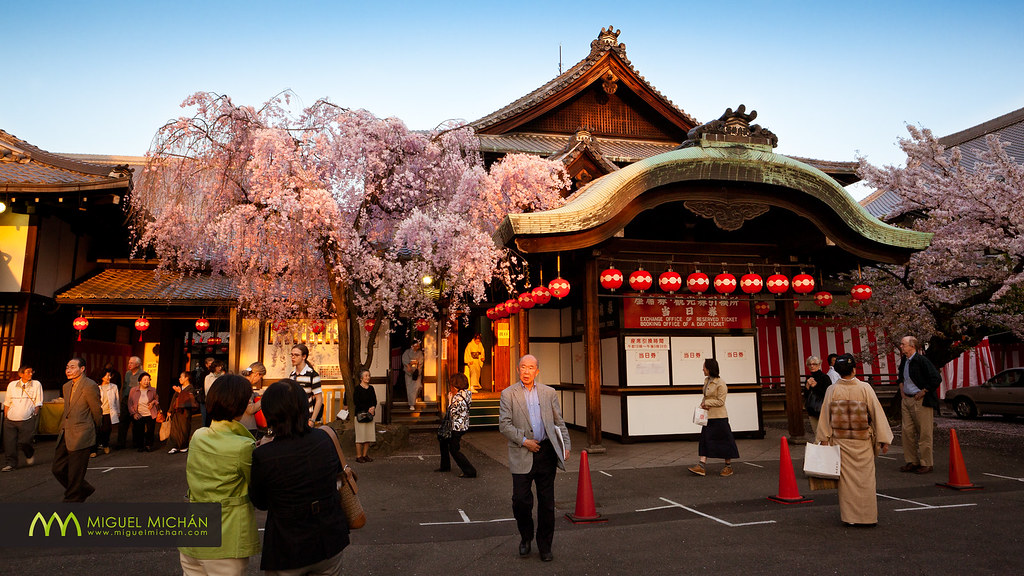Miyako Odori ( Kyoto Dances )
‘Miyako’ means capital city, and ‘Odori’ means dance, so ‘Miyako Odori’ translates literally as ‘Capital City Dances’, which makes sense when you consider that Kyoto used to be the capital of Japan, and that ‘Kyoto’ is still written with characters meaning ‘capital city’. In English the dances are often referred to as ‘The Cherry Blossom Dances’, because they take place in April when the cherry blossoms are in bloom, or sometimes just as ‘The Kyoto Dances’.
Despite the name, the dances began in 1872, four years after Tokyo took over as the capital of Japan. That was the first time that Gion Kobu’s nationally-famous geiko performed in public.
Since the second season in 1873, the dances have been held at the Gion Kobu Kaburenjo Theatre, and they continue to be popular with both Kyoto locals and visitors to the city. There are four hour-long performances each day, at 12:30pm, 2pm, 3:30pm and 4:50pm. This schedule is maintained every day throughout the whole of April – making the dances extremely hard work for the geiko and maiko – especially as they are expected to produce a flawless performance every time.
Dancing
 The geiko communities have built up a distinct style of music and dance over many years, and the geiko are required to adhere to the prescribed forms absolutely – there’s very little room for the performers to introduce their own innovations. The highly stylized and tightly choreographed dance moves are slow and graceful, so there’s no chance that speed of movement can hide any mistakes – every move must be (and almost always is) perfect.
The geiko communities have built up a distinct style of music and dance over many years, and the geiko are required to adhere to the prescribed forms absolutely – there’s very little room for the performers to introduce their own innovations. The highly stylized and tightly choreographed dance moves are slow and graceful, so there’s no chance that speed of movement can hide any mistakes – every move must be (and almost always is) perfect.
Participating in the dances is considered a great honour, so despite it being punishingly hard work, there is fierce competition amongst the geiko and maiko for the most prominent roles. (Maiko learn early-on in their careers just how demanding their chosen occupation is, so all the girls who make it through training must surely have an abundance of stamina and determination.).
References:
